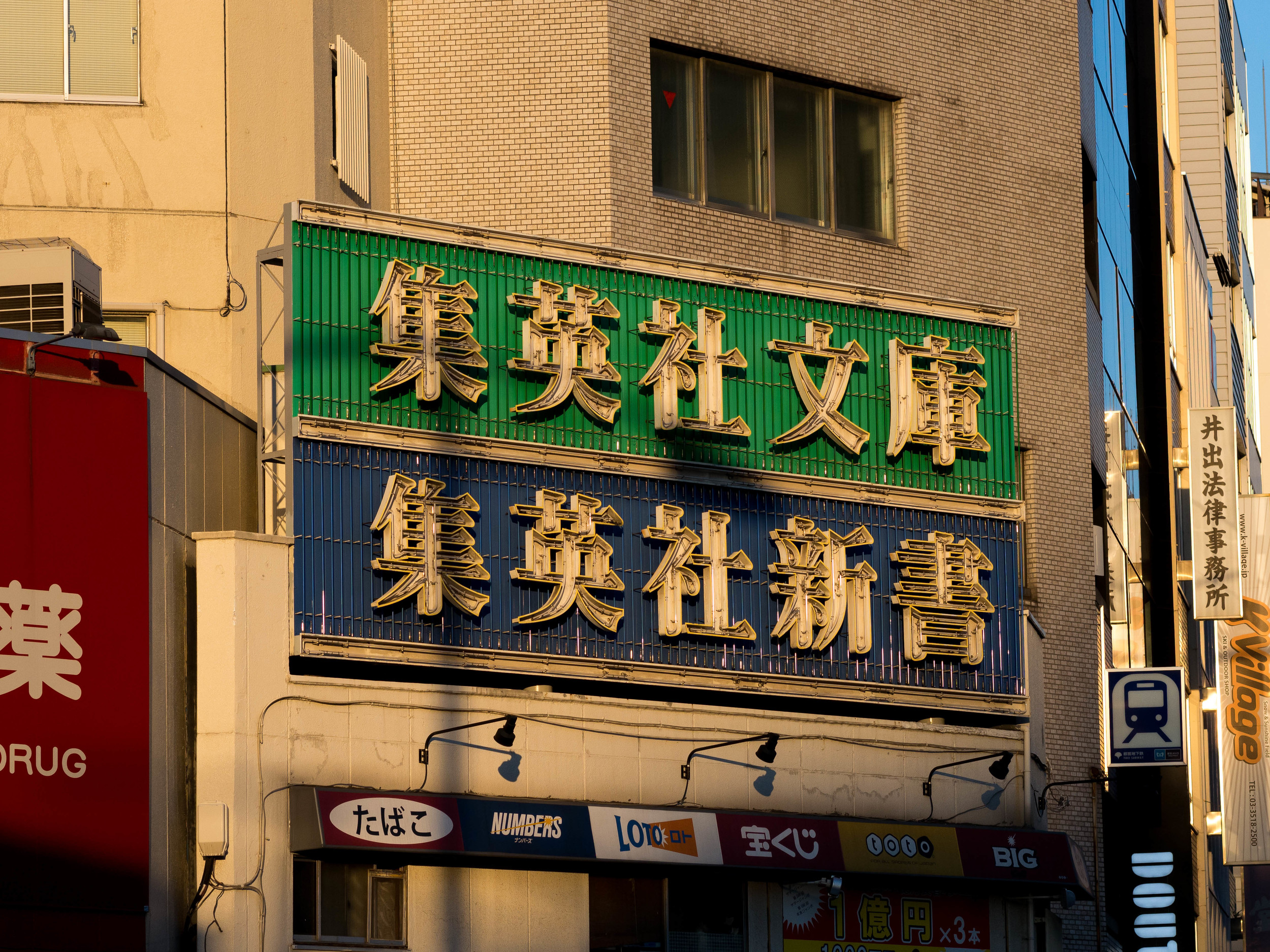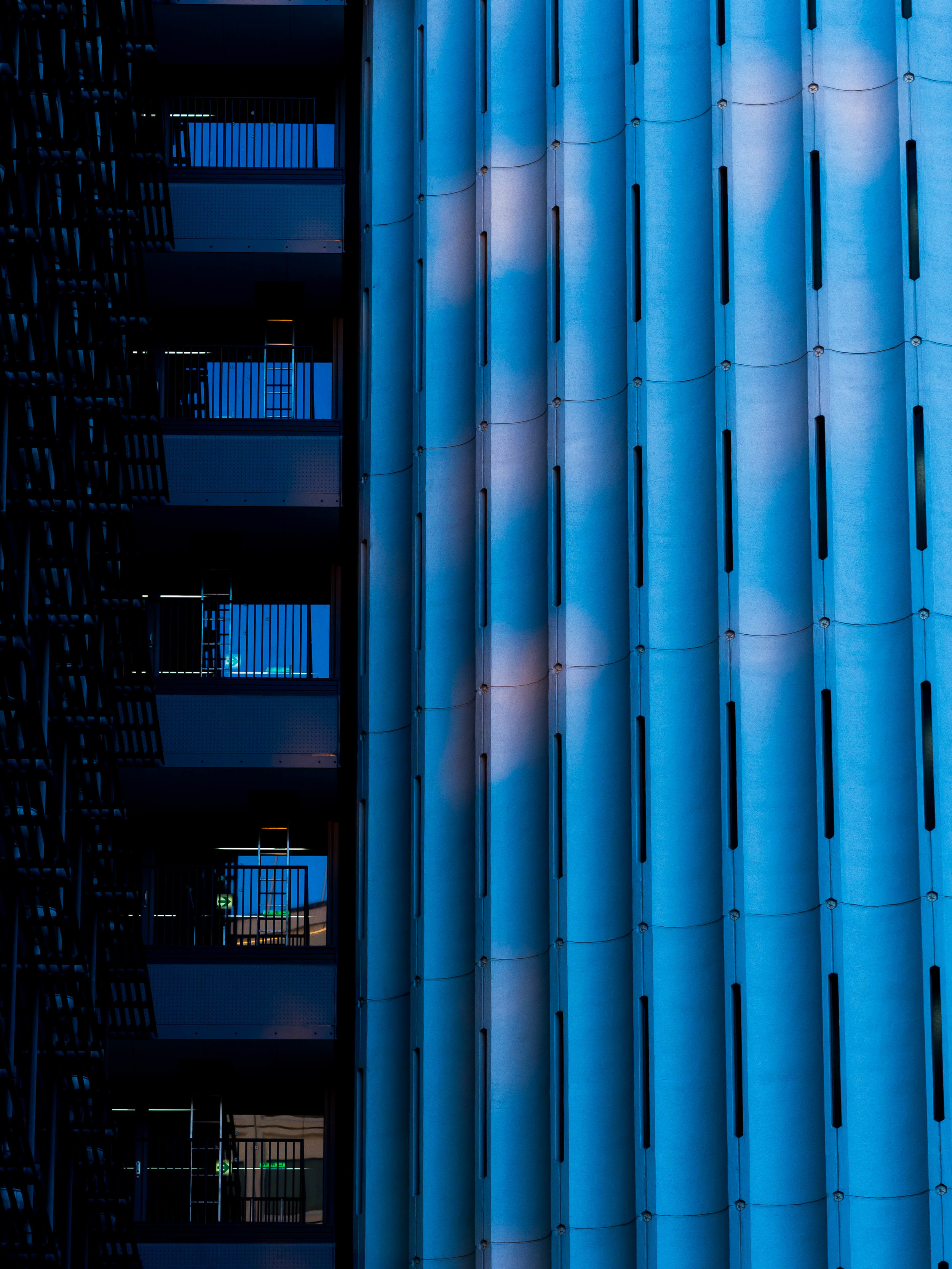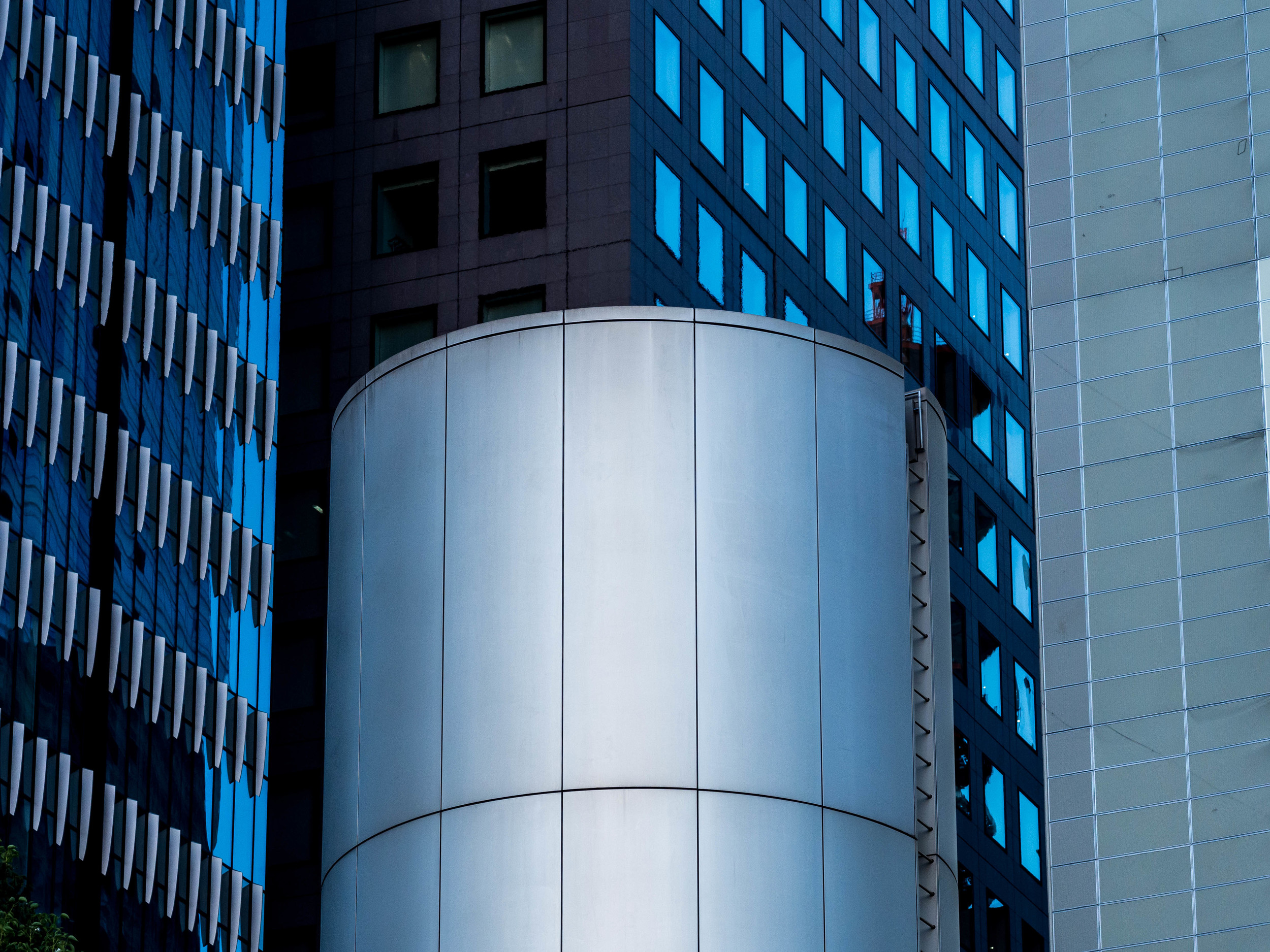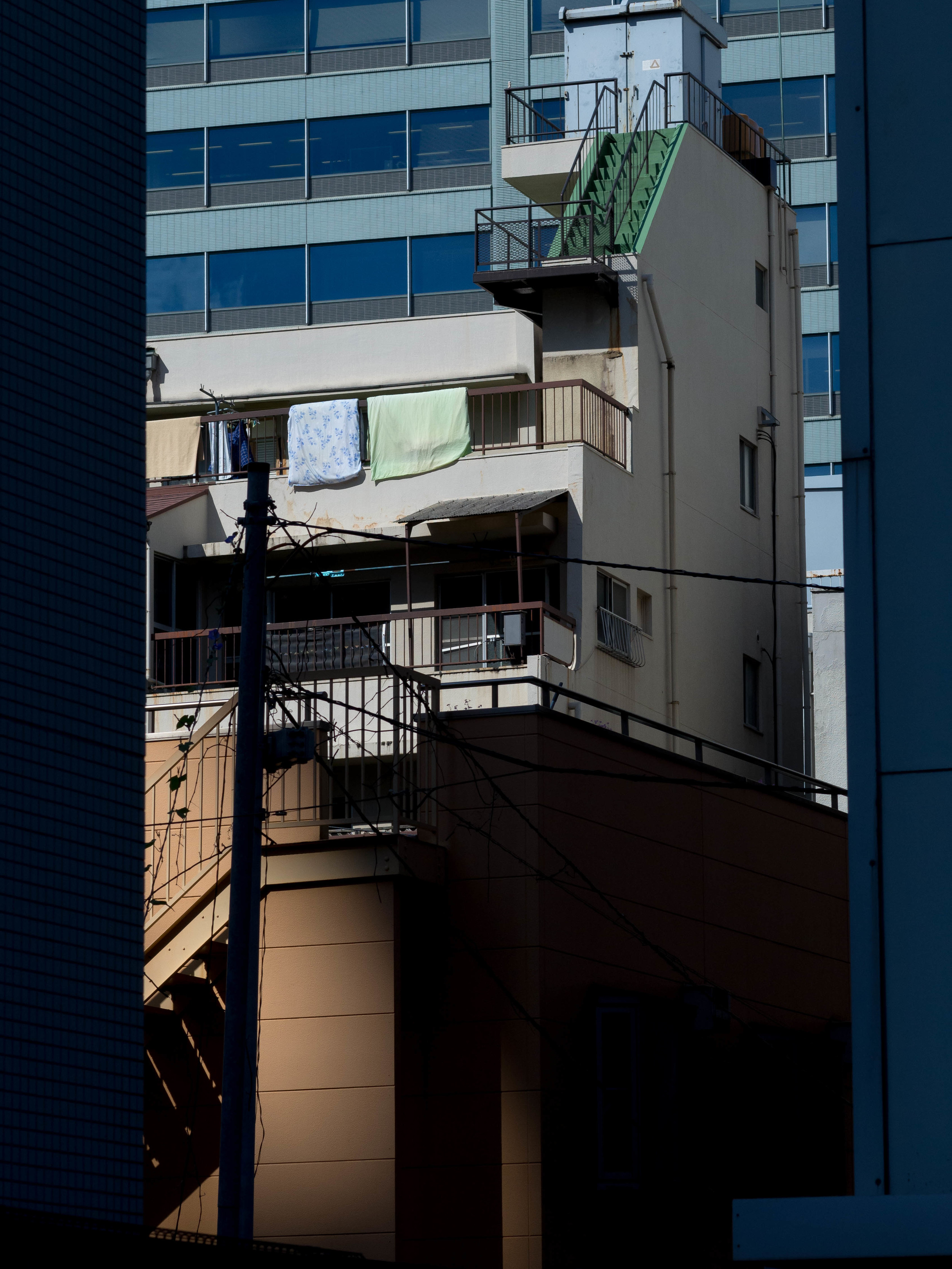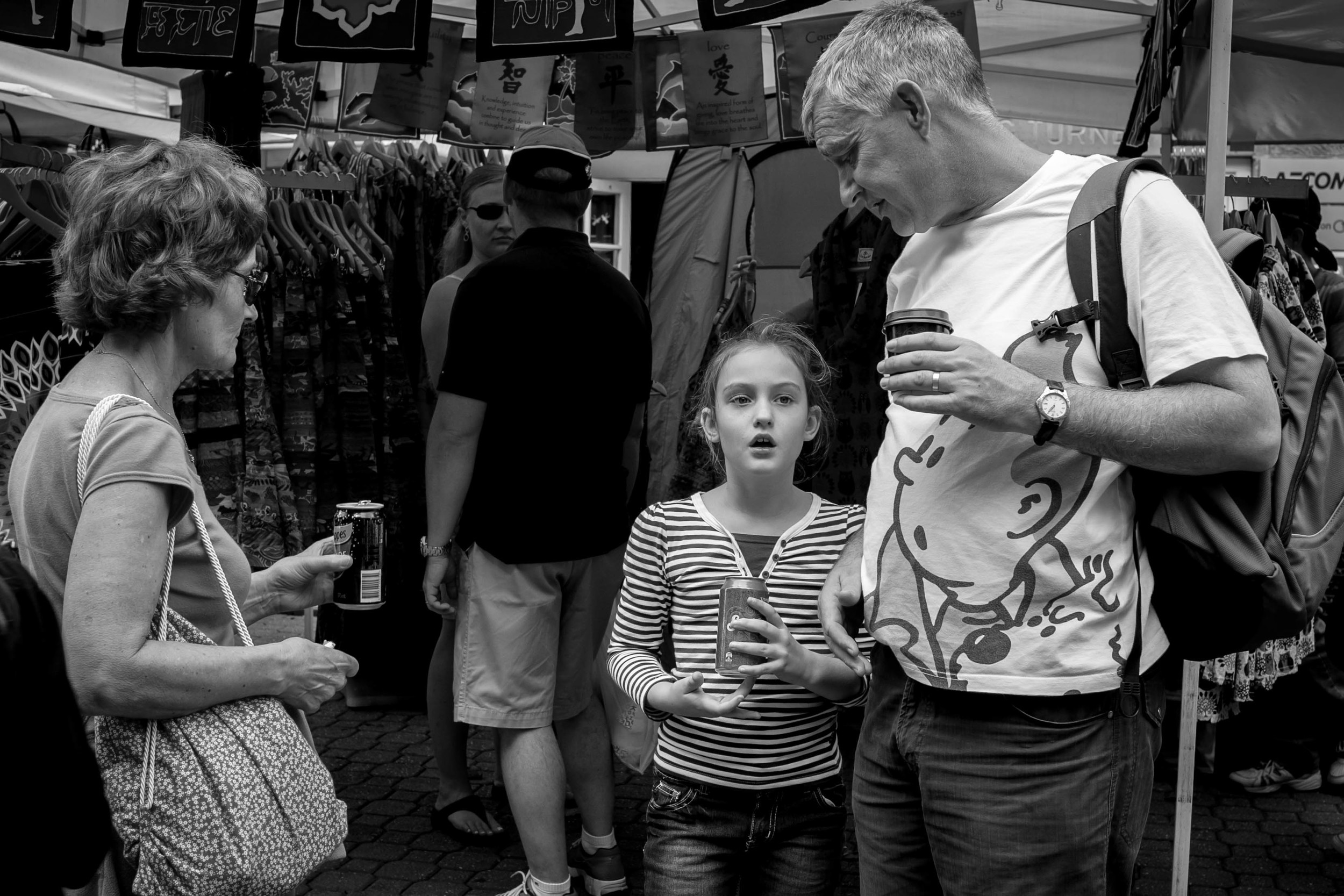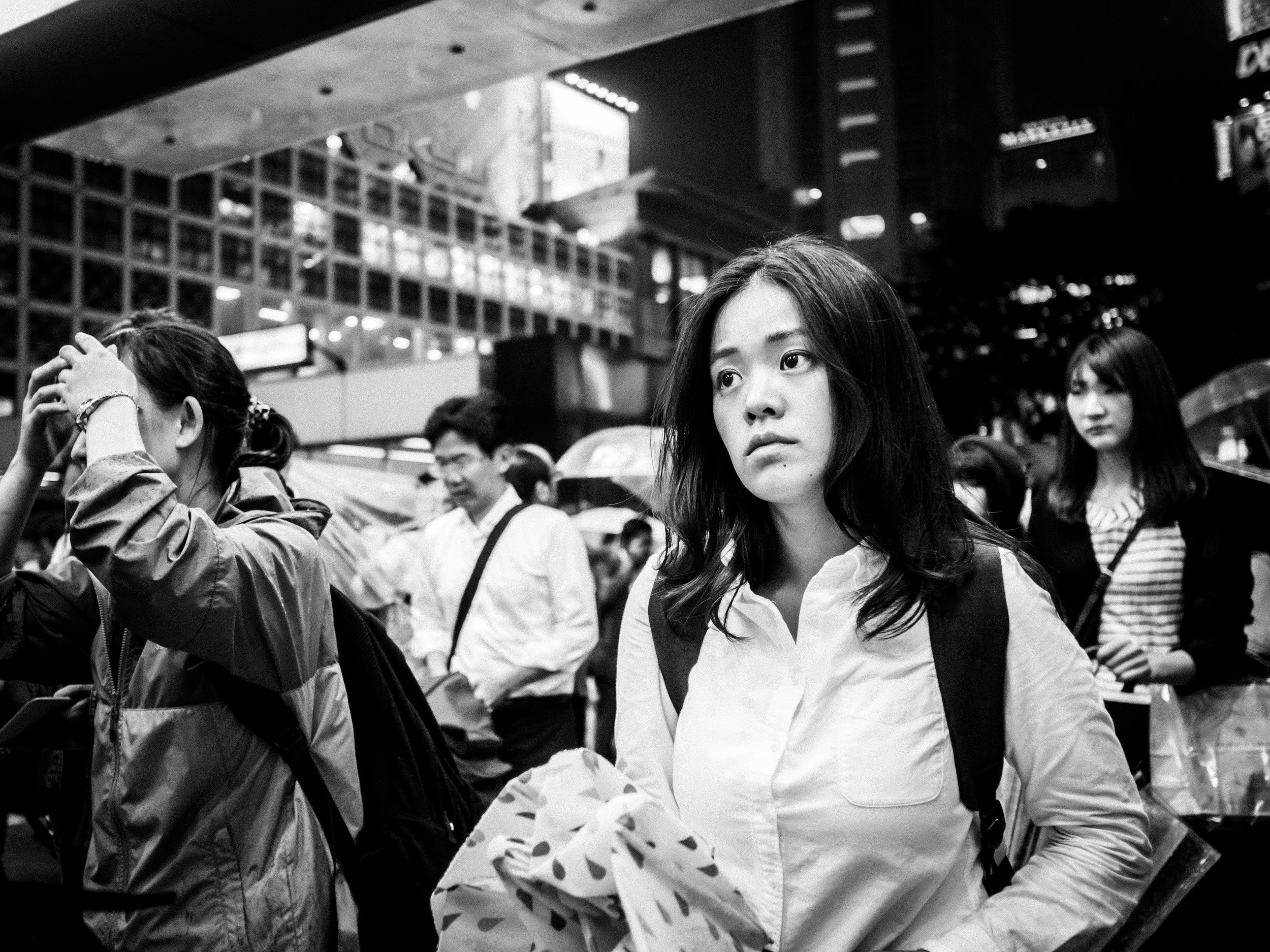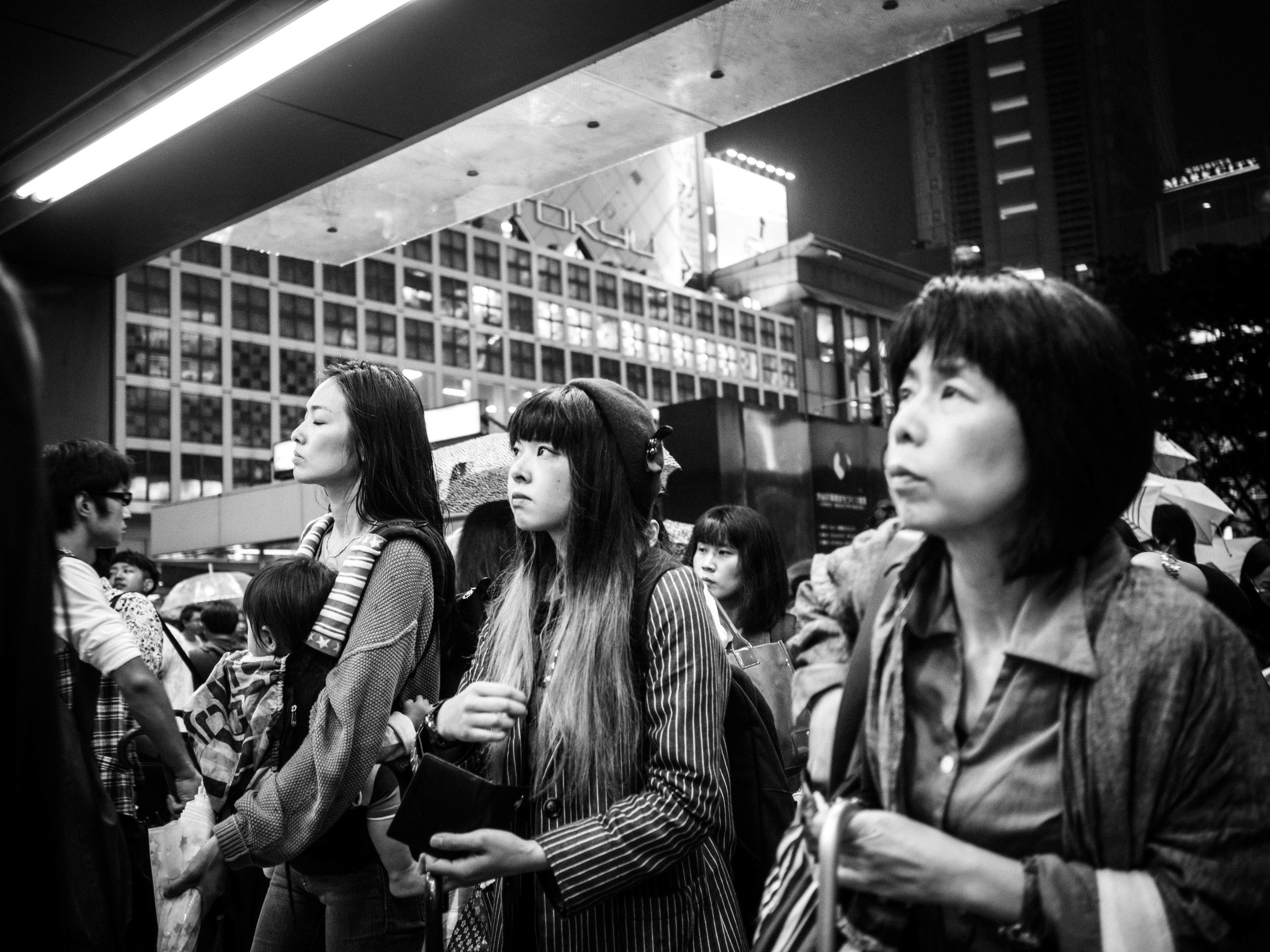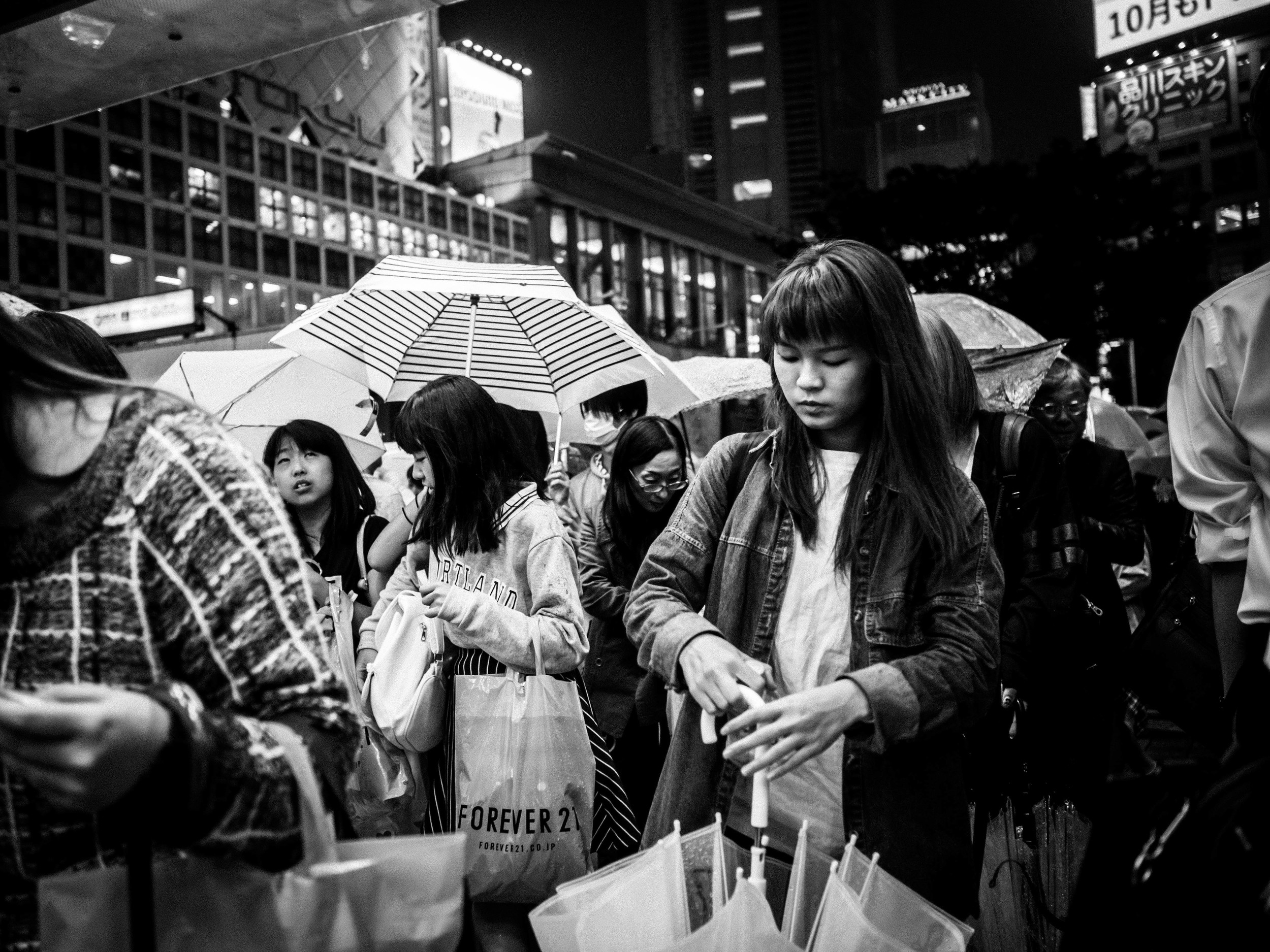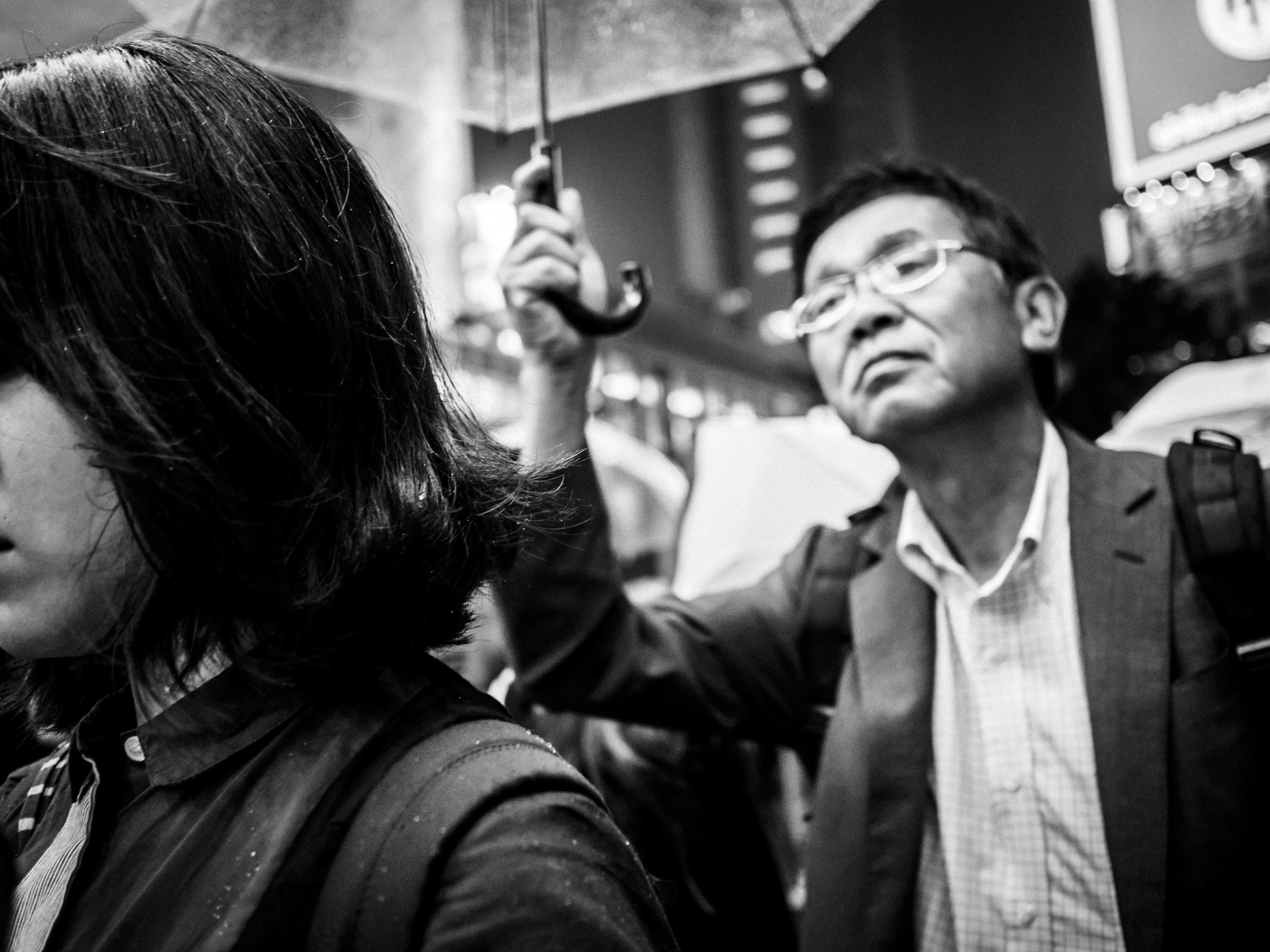I first discovered William Kleins' images in an old Camera and Darkroom magazine (when it was new!). Klein openly broke with convention and said of his own work that it was in a way a manifesto of what not to do by the conventions of his time. His loose and hectic style liberated my own thinking (more often later than at the time), but remained dormant until I discovered street photography.
My own style comes from echoes of past masters, as I suppose do that of many photographers from the film era. They are the culmination of the photographs that have moved me in the past and the feelings they provoked, interpreted in my time with my technique. Should I take on the work of more recent photographers? I do, but in ever decreasing amounts (I think everyone absorbs more early on in any learning process). At some point in the past my style was formed. It has evolved over time, like everyone's does, but the roots are easy enough to find.
The image above, taken in dismal weather at a Shibuya train station entrance in Tokyo, is the result of "deliberate randomness". The 17mm was focussed at about 4 foot at f2-4, relying on the unique rendering of the lens to create the anticipated look. The main subject is the "middle distance", not a specific person. The only thing the photographer has to be aware of is timing and composition, very liberating.
The coherently formed, but abstracted girl allows your imagination to tell her story. The sharper, but anonymous man in the foreground adds hard reality and a sense of time, contrasting with the softer main subject. There were a few images taken in that crowded entranceway, but this is my favourite.











